Research
A complete list of my publications can be found in my Google Scholar or ORCID profiles.
Below, you can find selected research spotlights of articles I have co-authored.
Hydrogen Strategies
A continental hydrogen network could significantly impact Europe’s energy transition. A network, mostly repurposing gas pipelines, could cut costs by 3.4%, especially when electricity grid expansion is limited. While expanding both networks yields the highest savings, a net-zero system is achievable without either – at a 10% premium – revealing flexibility in future energy infrastructure design.
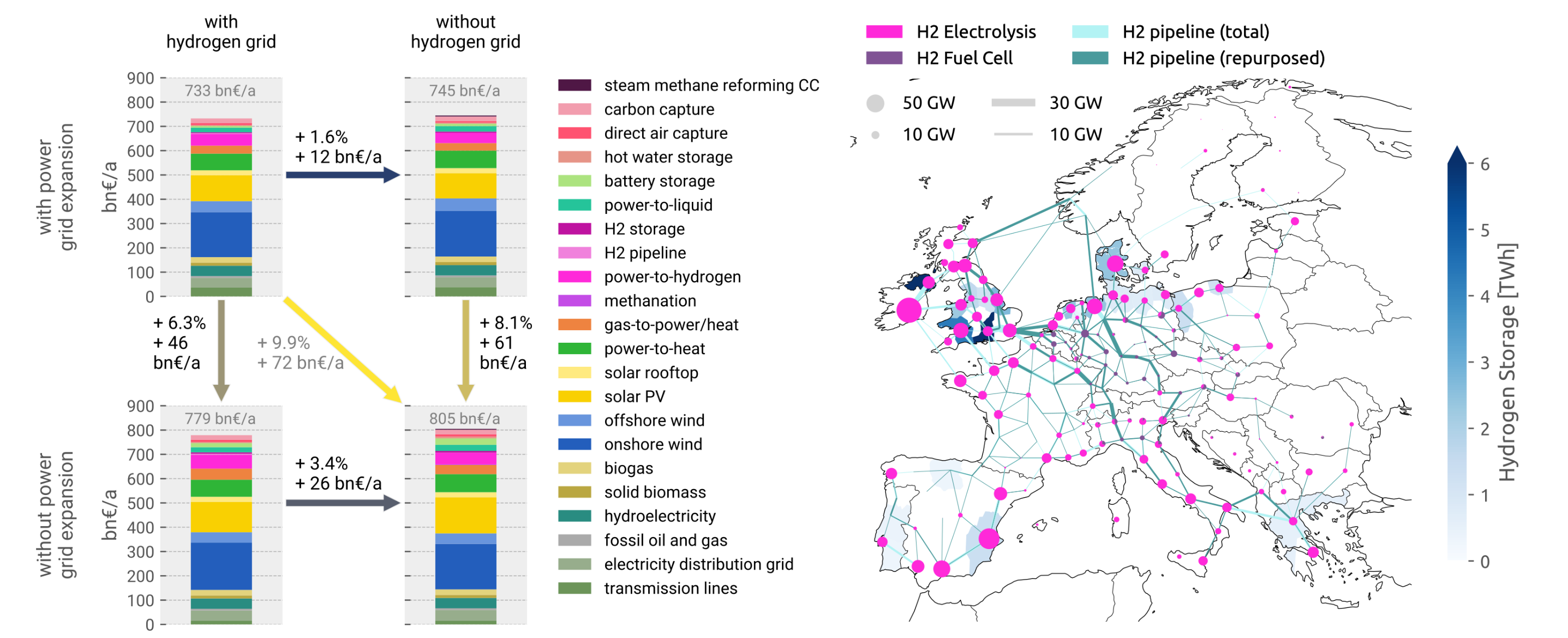
- Neumann, F., Zeyen, E., Victoria, M., & Brown, T. (2023). The potential role of a hydrogen network in Europe. Joule, S2542435123002660. doi:10.1016/j.joule.2023.06.016
Import Strategies
Imports of renewable energy or green steel into Europe could reduce system costs by 1-14%. Methanol, steel, and hydrogen by pipeline emerge as preferred import vectors over electrity, with diminishing returns for larger volumes. However, retaining some domestic power-to-X production benefits renewable integration. The study highlights the need for coordination between Europe’s import and infrastructure strategy to create a resilient and cost-effective pathway to net-zero.
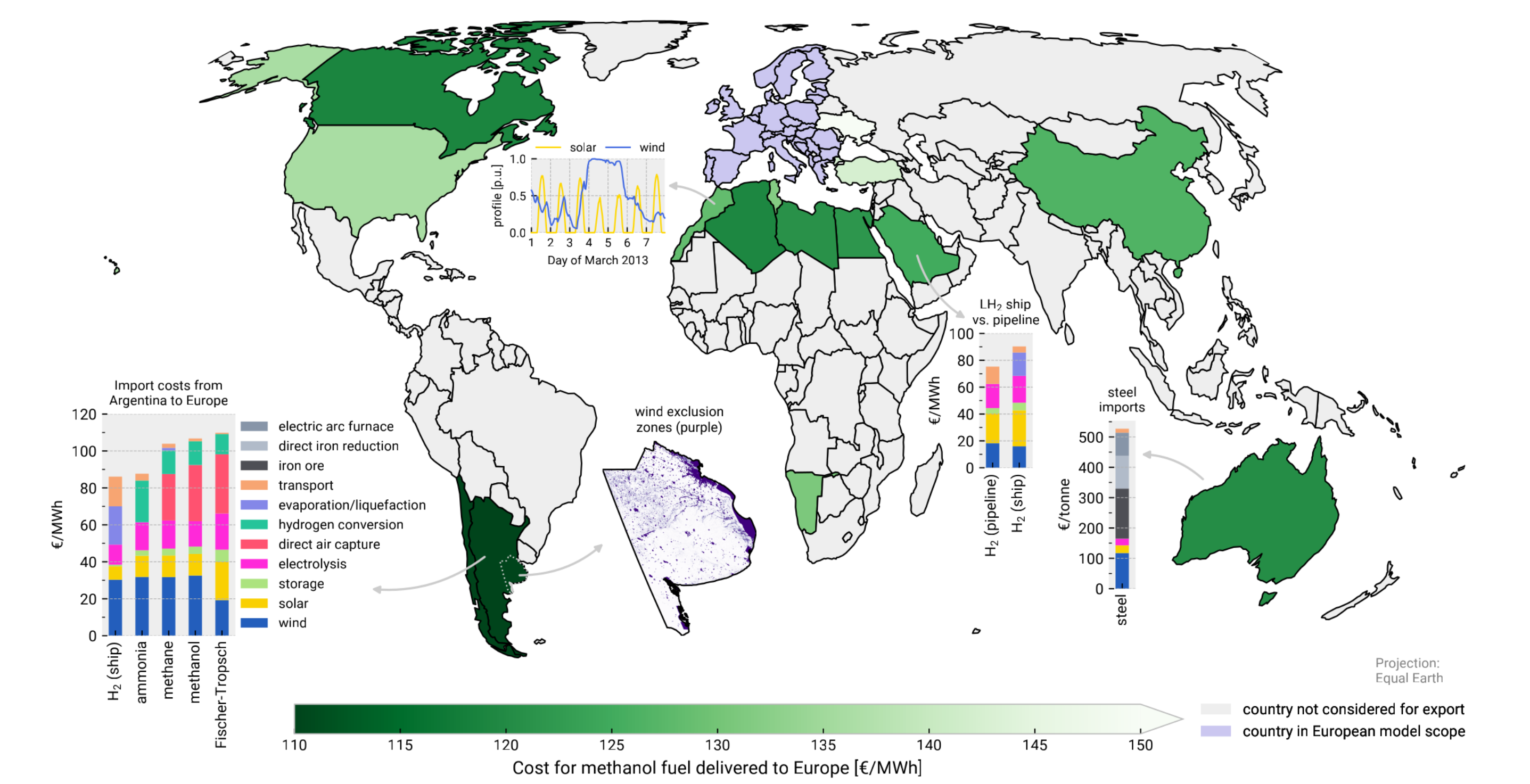
- Neumann, F., Hampp, J., & Brown, T. (2025). Green energy and steel imports reduce Europe’s net-zero infrastructure needs. Nature Communications doi:10.1038/s41467-025-60652-1
Carbon Management Strategies & Biomass
A CO2 pipeline network could enhance European carbon management by connecting point-source capture to geological sequestration and utilization sites for synthetic fuel and feedstock production. The study demonstrates how carbon infrastructure interacts with hydrogen networks, renewables deployment, industry decarbonization approaches, and biomass usage.
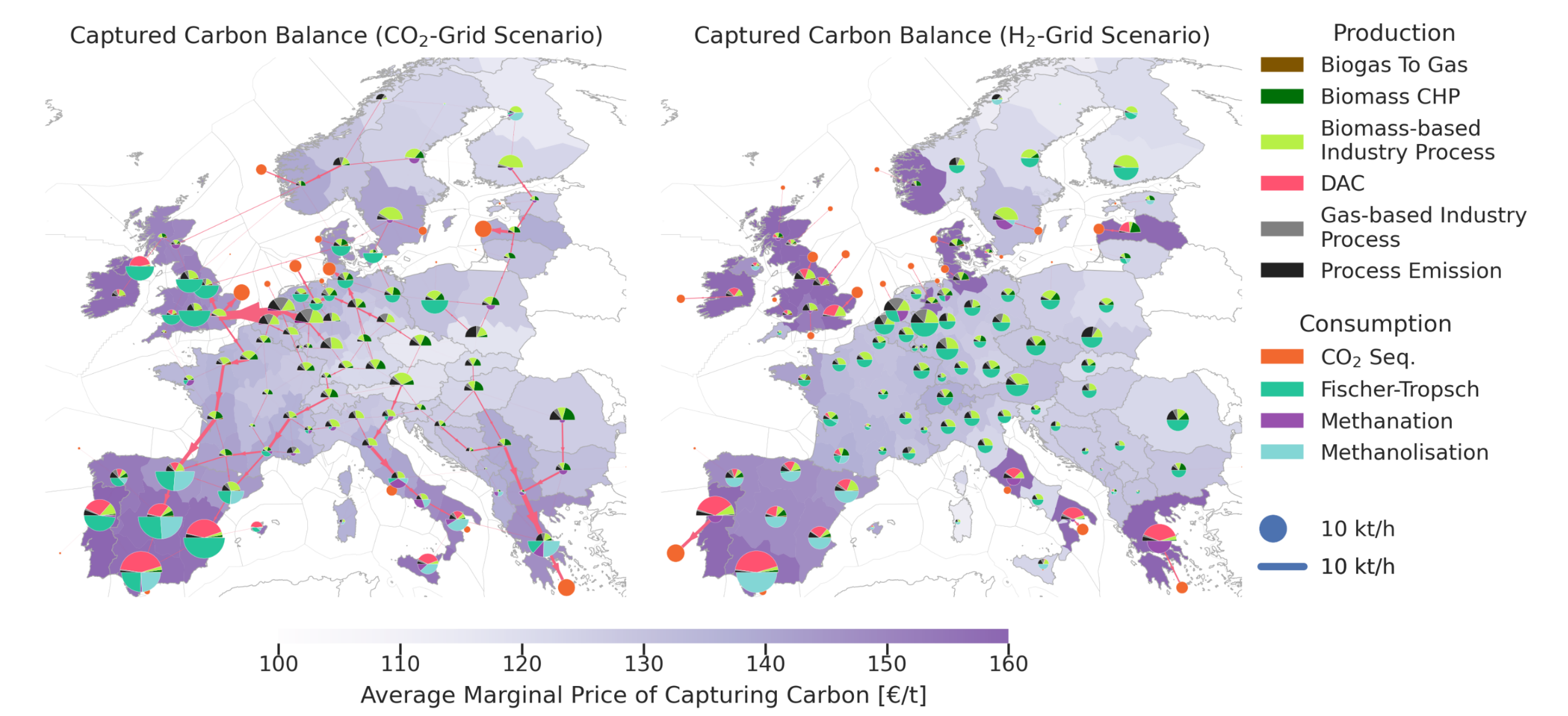
- Hofmann, F., Tries, C., Neumann, F., Zeyen, E., & Brown, T. (2025). H2 and CO2 Network Strategies for the European Energy System. Nature Energy doi:10.1038/s41560-025-01752-6
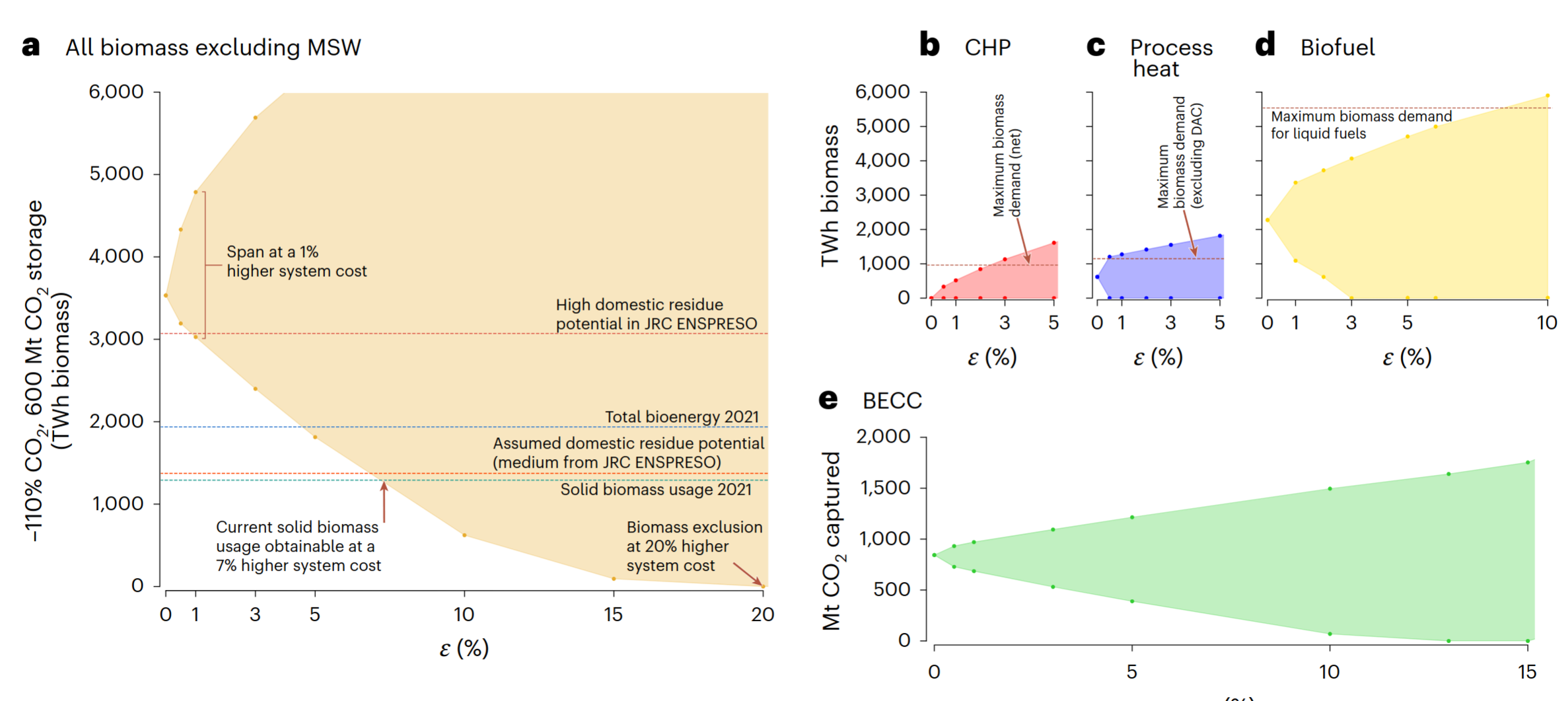
- Millinger, M., Hedenus, F., Zeyen, E., Neumann, F., Reichenberg, L., & Berndes, G. (2025). Diversity of biomass usage pathways to achieve emissions targets in the European energy system. Nature Energy doi:10.1038/s41560-024-01693-6
Modelling-to-Generate Alternatives (MGA)
Many energy system studies provide single optimal solutions, potentially overlooking viable cost-effective alternatives. This line of research applies modeling-to-generate-alternatives to uncover diverse near-optimal configurations for Europe’s renewable power system. Exploring the decision space beyond least-cost solutions offers a more comprehensive view of possible clean energy futures, aiding robust infrastructure planning and consensus-building where public acceptance is limited.
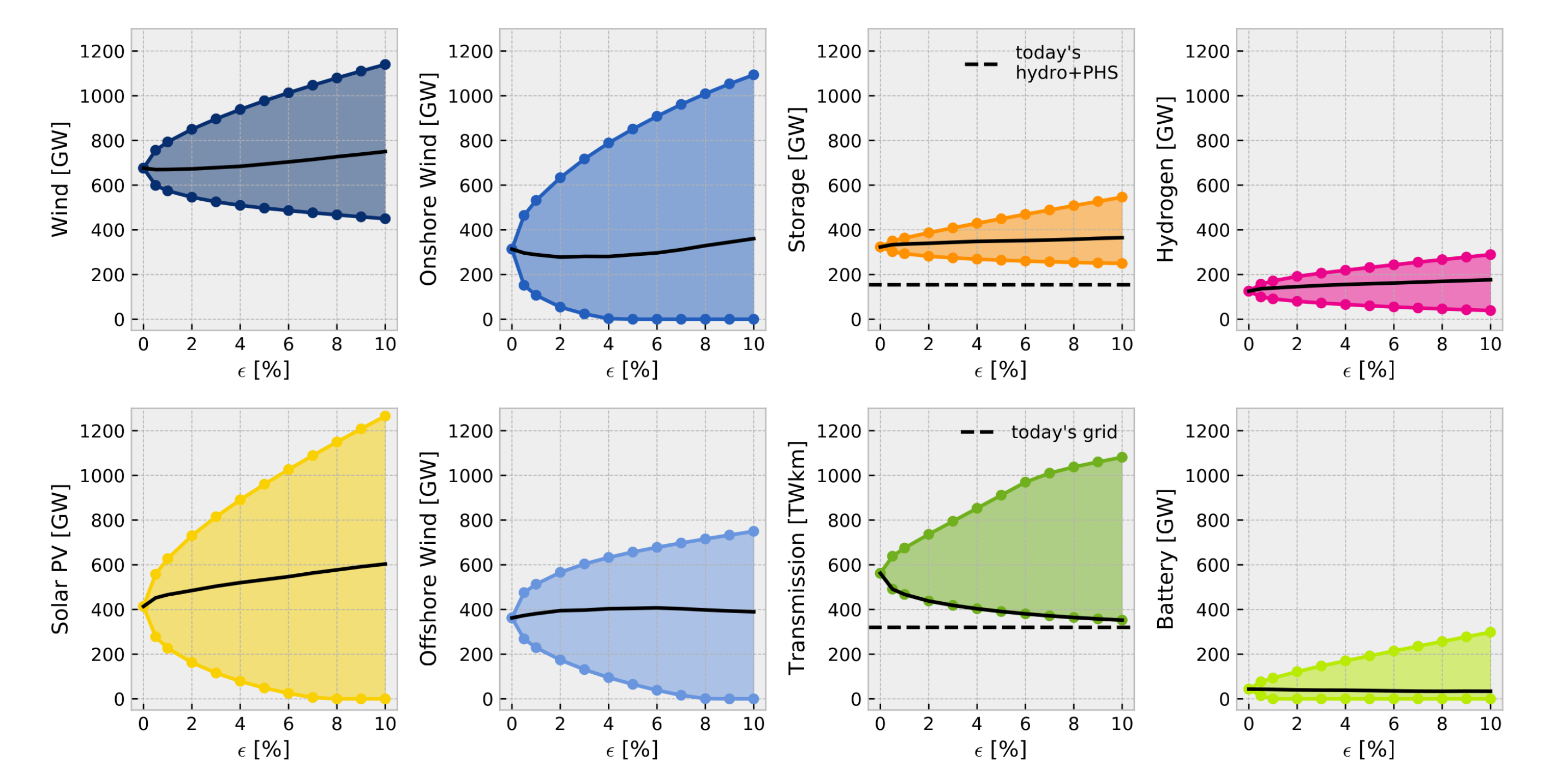
-
Neumann, F., & Brown, T. (2021). The near-optimal feasible space of a renewable power system model. Electric Power Systems Research, 190, 106690. doi:10.1016/j.epsr.2020.106690
-
Neumann, F., & Brown, T. (2023). Broad ranges of investment configurations for renewable power systems, robust to cost uncertainty and near-optimality. iScience, 26(5), 106702. doi:10.1016/j.isci.2023.106702
Prices in 100% Renewable Electricity Markets
This study explores price formation mechanisms in fully renewable electricity markets where traditional fuel costs no longer drive pricing. Using a stylized model with wind, solar, batteries and hydrogen storage, it demonstrates how demand elasticity and storage bidding interact to produce stable pricing. Even modest demand elasticity of -5% significantly smooths price duration curves, reducing zero-price hours from 90% to 30% and providing more consistent revenues across 70 weather years.

- Brown, T., Neumann, F., & Riepin, I. (2025). Price formation without fuel costs: The interaction of demand elasticity with storage bidding. Energy Economics, 147, 108483. doi:10.1016/j.eneco.2025.108483
Multi-Decadal Weather Variability
This study examines how 60 years of historical weather data impacts the design of Europe’s future sector-coupled energy system. Findings reveal that robust system designs, capable of withstanding compound weather events, require strategic backup generation and transmission infrastructure. The study highlights the importance of considering long-term weather patterns in energy planning to ensure resource adequacy and emissions goals are met in highly renewable systems.
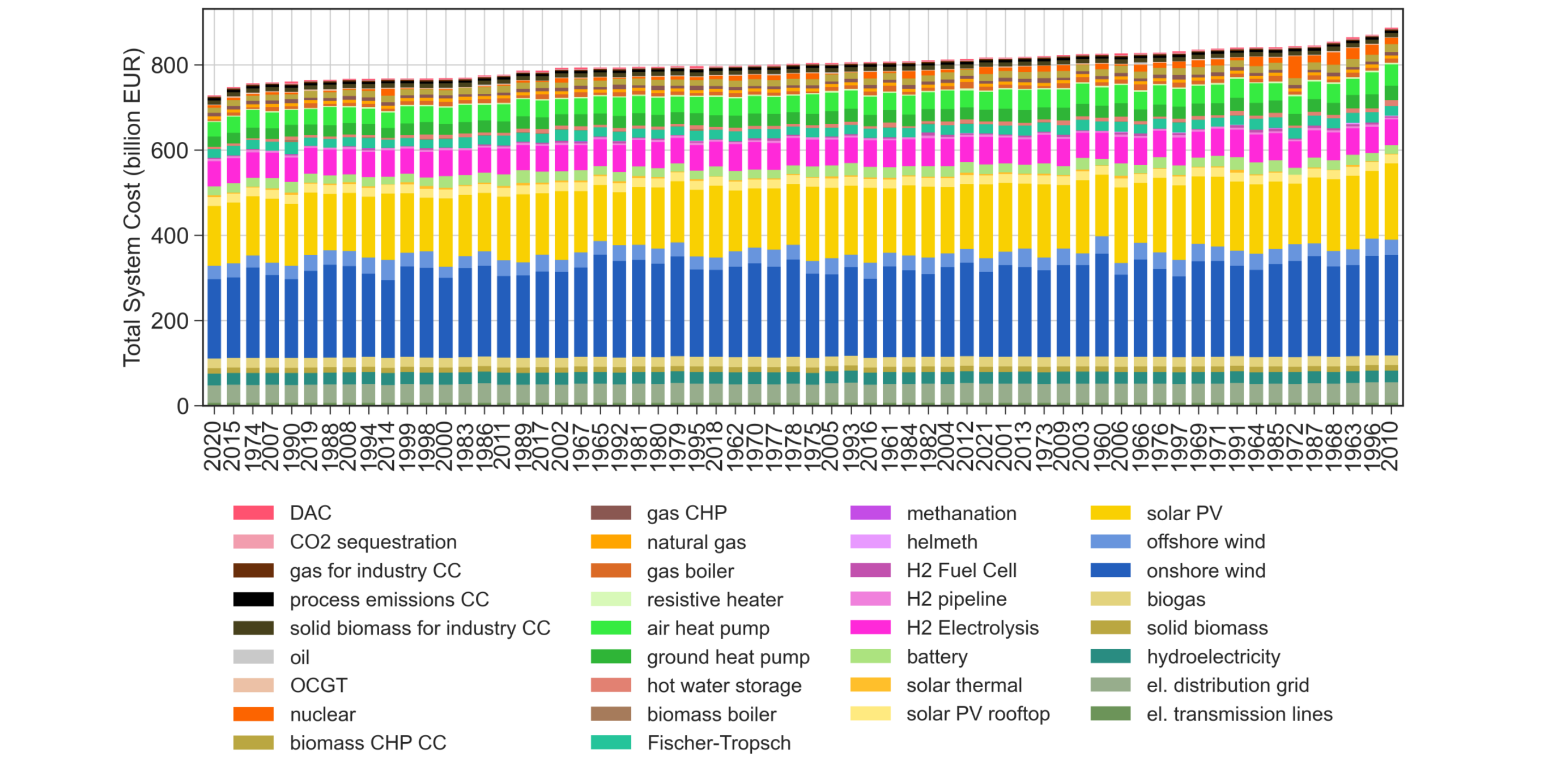
- Gøtske, E. K., Andresen, G. B., Neumann, F., & Victoria, M. (2024). Designing a sector-coupled European energy system robust to 60 years of historical weather data. Nature Communications, 15, 10680. doi:10.1038/s41467-024-54853-3